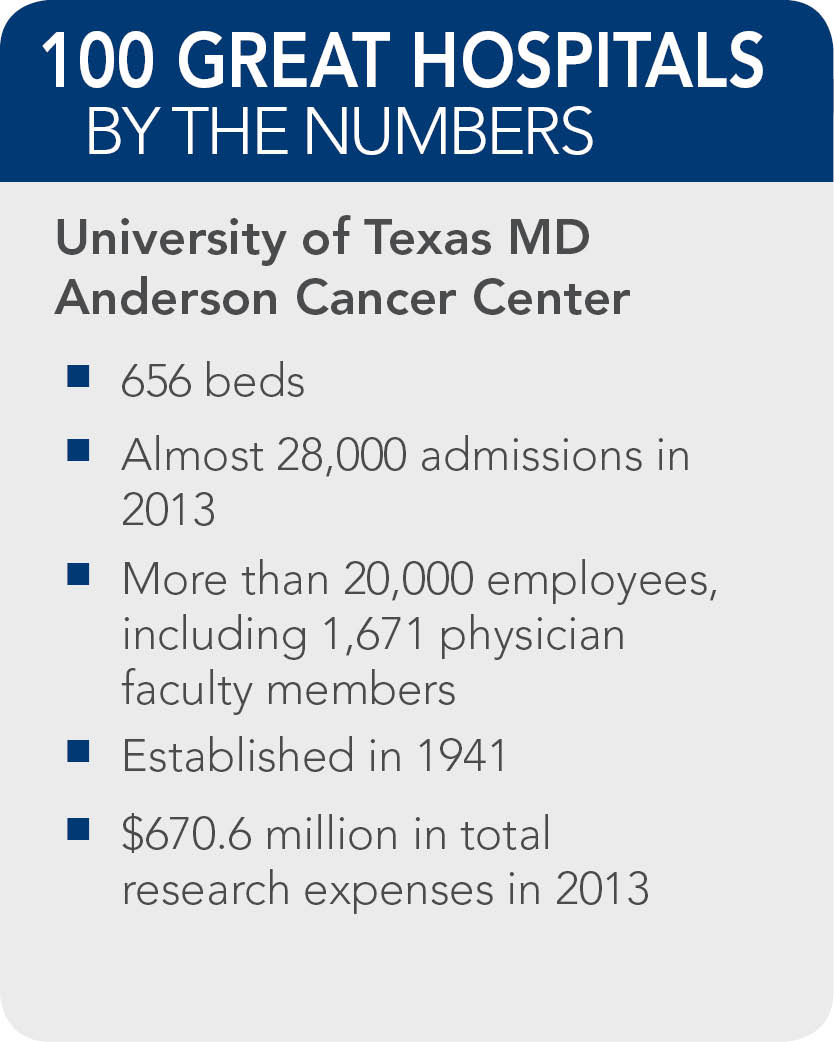University of Texas MD Anderson Cancer Center (Houston). In the early 1900s, Monroe Dunaway Anderson, his brother Frank and Frank's brother-in-law founded one of the most successful cotton businesses in the South. After accumulating much wealth, MD Anderson established a charitable foundation, which was to be used following his death to improve healthcare. In 1941, two years after MD Anderson's death, the foundation's trustees and the Texas legislature authorized the University of Texas to establish a hospital for cancer research and treatment.
 At the time, the hospital was known as the Texas State Cancer Hospital and the Division of Cancer Research. It received its current name, University of Texas MD Anderson Cancer Center, in 1988 to more closely tie MD Anderson's legacy with the university.
At the time, the hospital was known as the Texas State Cancer Hospital and the Division of Cancer Research. It received its current name, University of Texas MD Anderson Cancer Center, in 1988 to more closely tie MD Anderson's legacy with the university.
Today, MD Anderson stands as one of the most prestigious teaching hospitals and cancer institutions. U.S. News & World Report ranked MD Anderson as the top cancer hospital in the country in its 2013-14 list — a spot the hospital has held for seven consecutive years and 10 of the past 12 years. U.S. News also pegged MD Anderson as a top 10 hospital for otolaryngology and gynecology.
MD Anderson, which has more than 19,000 employees and 1,600 faculty members, recorded 28,000 admissions in 2013. It is also one of the most important research centers in the country, spending $670.6 million of federal, state and internal grants to further cancer research. In 2012, MD Anderson created its Moon Shots Program, which is challenging physicians and scientists to target eight types of cancer and dramatically reduce mortality for the diseases.

 |
 |


